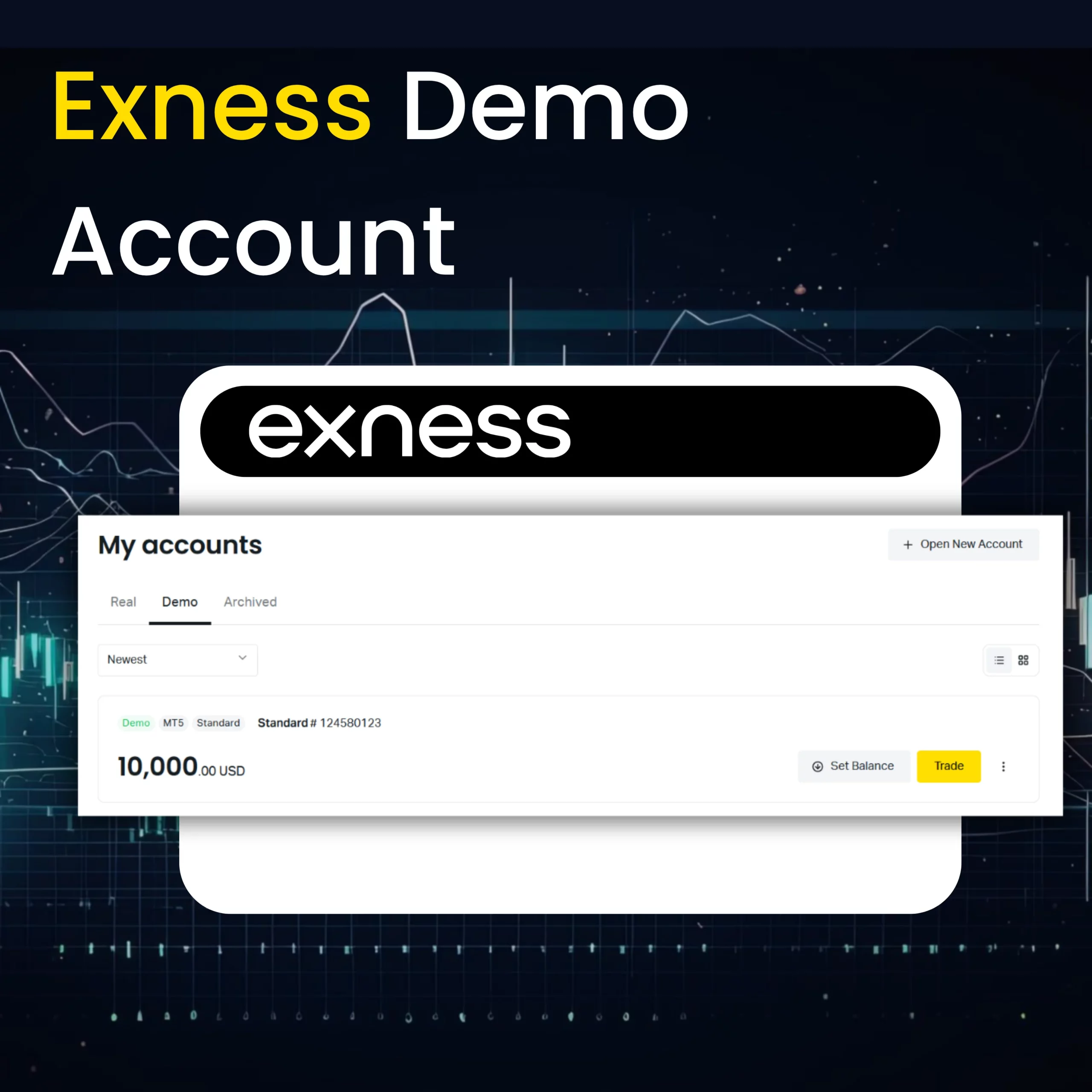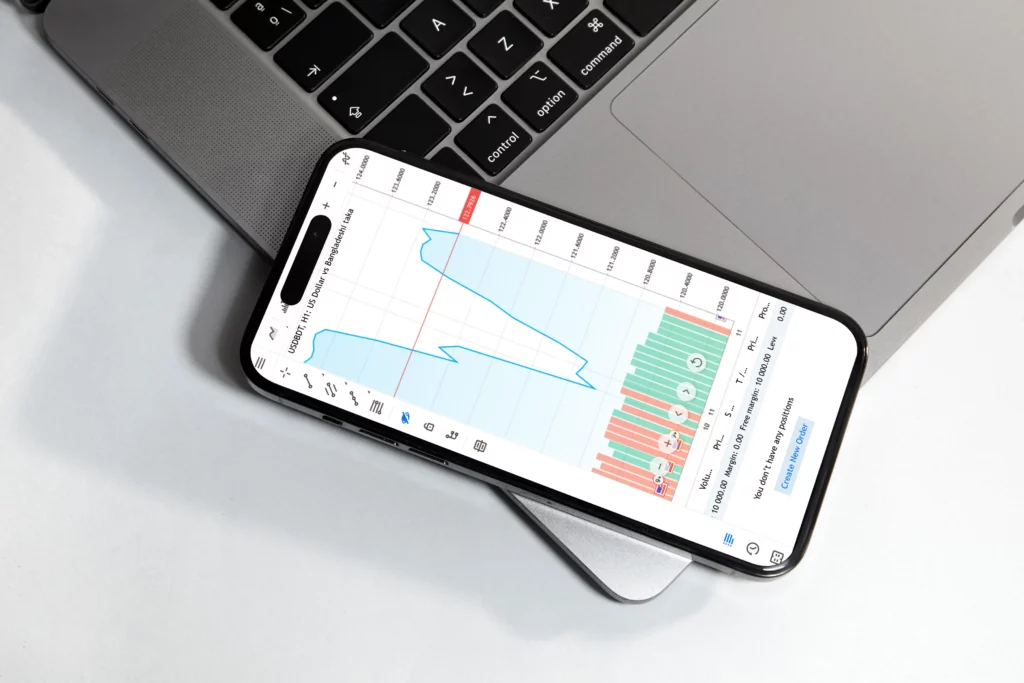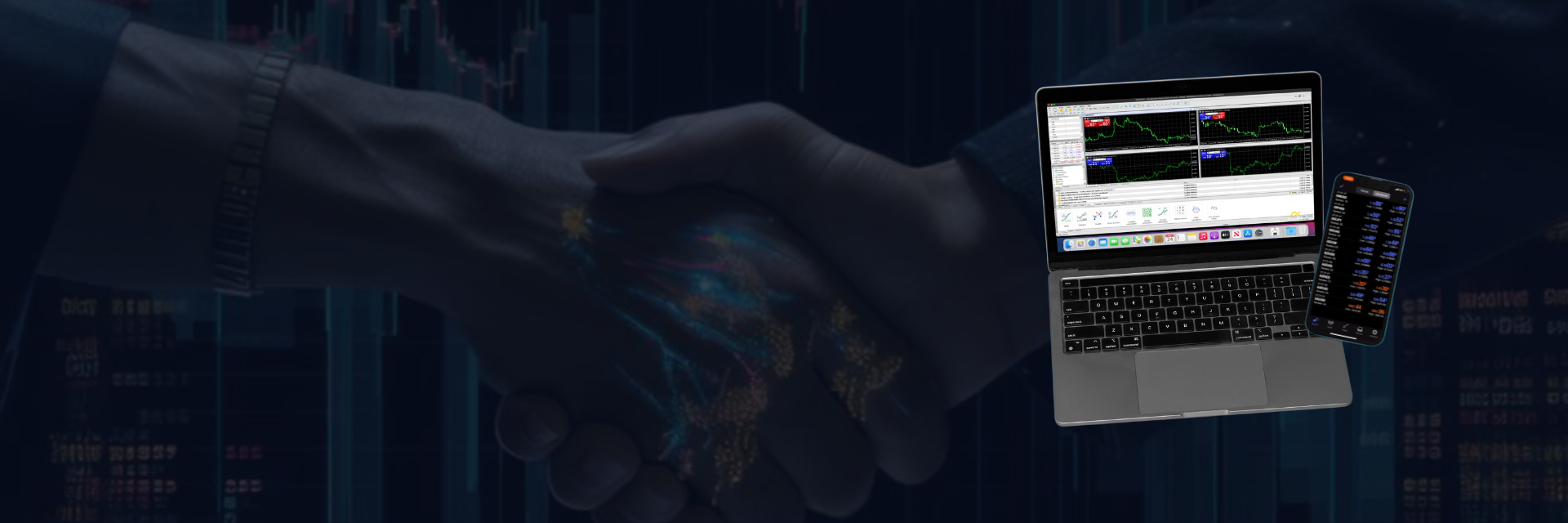
Exness Demo Account
Exness, a well-known name in online trading, gives traders a special chance to try trading without risk using its Demo Account. This helps people at any level practice and test strategies without any real money involved. It’s like a stepping stone to real trading.
How to Create an Exness Demo Account
Who Should Use the Exness Demo and Why
The Exness Demo Account is great for all kinds of traders, from newbies to pros.
- New Traders: For new folks in trading, the Demo Account is a key tool for learning. It gives a hands-on experience, so new traders can use what they learn in a safe way. This is key for getting a solid grasp of market moves, reading charts, and getting used to the trade system.
- Mid-Level Traders: Traders with some know-how can boost their skills with the Demo Account. It lets them try out new strategies, learn about different financial tools, and adapt to market shifts, all without the risks of a Real Account.
- Pro Traders: Even top traders need to keep up and tweak their tactics, especially in the fast-changing money world. The Exness Demo Account lets pros test new tactics, try out advanced tools, and keep up with market shifts without risking their money. This is key for keeping their edge in the trading game.
The Exness Demo Account is a must-have for traders at any stage. It lets them learn, experiment, and hone their trade skills without any risks.
How to use the Exness Demo Account
Using the Exness Demo Account is straightforward, but it’s important to approach it like a real trading account to get the most out of it. Here are some easy steps to follow:
- Log in to your Demo Account on your preferred platform (MT4, MT5, or Web Terminal).
- Familiarize yourself with the interface, tools, and features by exploring the platform.
- Select the financial instruments you want to practice trading, such as currencies, stocks, or commodities.
- Study the price charts and use the analytical tools to identify potential trading opportunities.
- Place virtual trades, just as you would with real money, by setting entry and exit points, stop-loss and take-profit levels.
- Monitor your positions and manage your trades, adjusting your strategy as needed.
- Review your trading activity and performance regularly to identify areas for improvement.
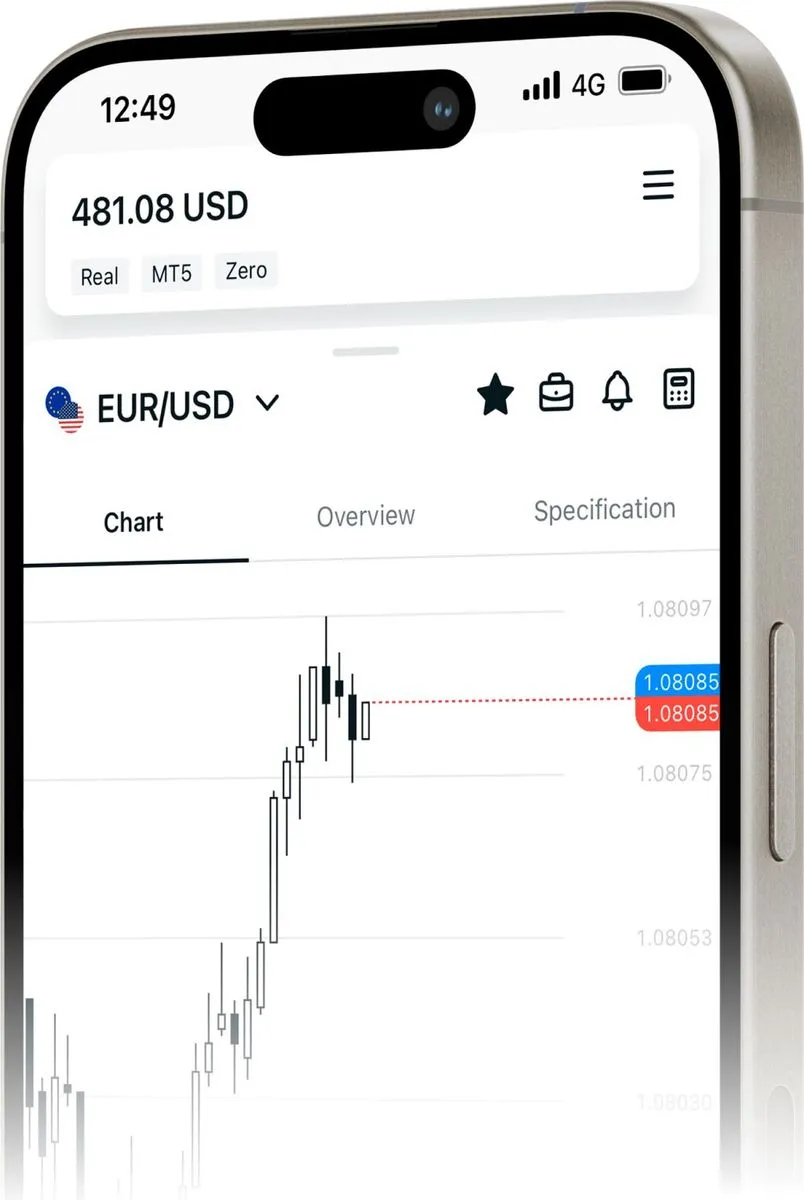
Remember, the Demo Account offers a risk-free environment, so don’t be afraid to experiment with different strategies and techniques. The more you practice, the better prepared you’ll be for live trading.
Platforms Available for Exness Demo Account
The Exness Demo Account offers a variety of platforms to cater to the diverse needs and preferences of traders. Each platform comes with its unique features and capabilities, allowing traders to choose the one that best fits their trading style and requirements. From mobile trading to advanced desktop applications, Exness provides a comprehensive range of options for a seamless and efficient trading experience.
Exness Mobile App Demo
The Exness Mobile App Demo is designed for traders who prefer on-the-go trading. This app offers the flexibility to trade anytime and anywhere, with a user-friendly interface that makes mobile trading a breeze. It includes essential trading tools and features, real-time quotes, and charting capabilities, ensuring that traders don’t miss out on any market opportunities even when they are away from their desk.
Exness MT4 Demo
The Exness MT4 Demo provides traders with access to one of the most popular trading platforms in the world. MetaTrader 4 is renowned for its reliability, advanced charting tools, and automated trading capabilities through Third-Party Expert Advisors (EAs). The MT4 Demo platform allows traders to explore all these features in a risk-free environment, making it an excellent choice for both beginners and experienced traders.
Exness MT5 Demo
For those seeking more advanced features, the Exness MT5 Demo is the perfect choice. MetaTrader 5 offers enhanced charting capabilities, more timeframes, better order management tools, and access to additional markets compared to MT4. The MT5 Demo account is ideal for traders who want to practice complex trading strategies or explore new markets without any financial risk.
Exness Web Terminal Demo
The Exness Web Terminal Demo offers a convenient and accessible trading experience directly from a web browser, without the need for any downloads or installations. This platform is ideal for traders who prefer simplicity and ease of access. It provides all the essential trading tools and features, including real-time market data and a full range of analytical capabilities, ensuring a robust trading experience.
The Difference Between Demo and Real Exness Account
The Exness Demo Account is great for practice and to learn, but it’s key to know what makes it different from a real trading account before you start to trade with your own cash:
- Money: A demo account gives you virtual, endless cash for trading, but for a live account, you have to use your own real money.
- Risk: There is no financial risk involved when trading on a demo account since you’re using virtual funds. However, with a live account, you can experience real monetary losses if your trades are unsuccessful.
- Feelings: Using real cash in a real account can stir up big feelings like fear, want, and worry, which can change how you decide. These feelings don’t come up when you trade with a safe demo account.
- Speed: Live accounts might have small hold-ups in trading compared to demo accounts because real-world conditions can slow things down.
- Market Depth: The liquidity and depth of the live markets can differ from the simulated environment of a demo account, particularly during periods of high volatility or low trading activity.
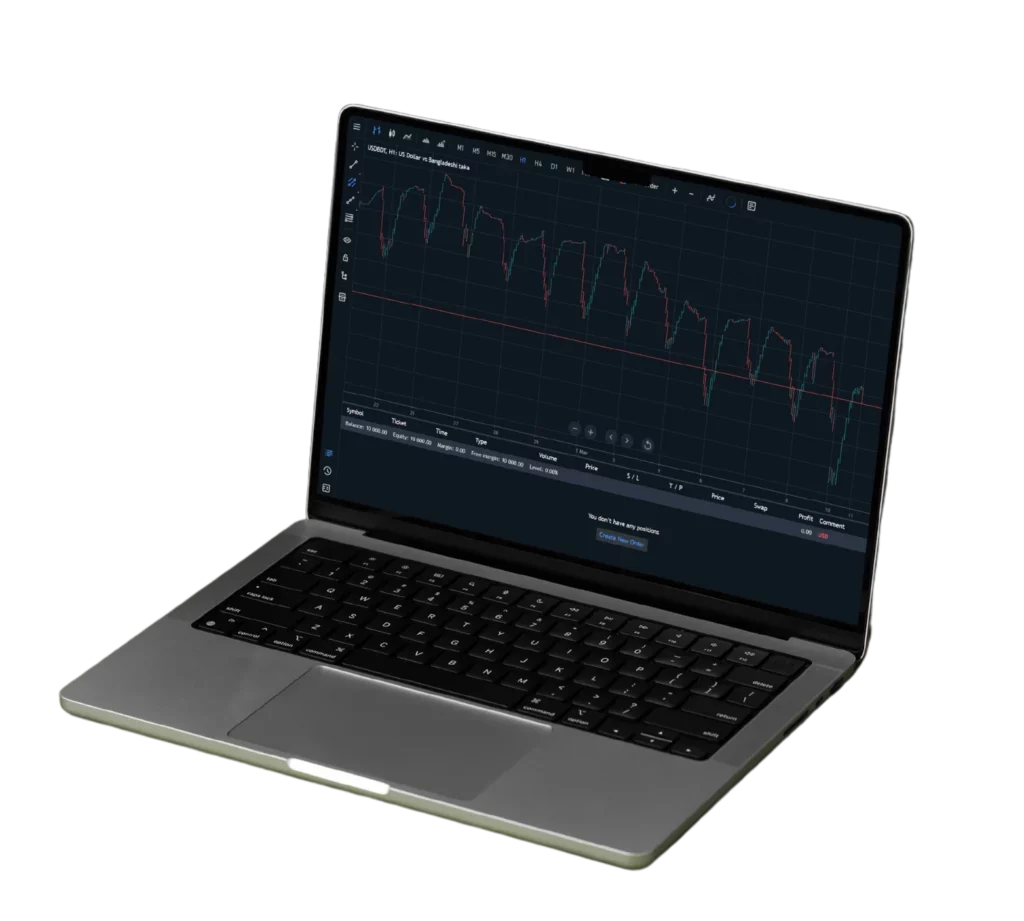
Conclusion
To sum up, the Exness Demo Account is a key tool for anyone starting to trade. It offers a safe way to learn, a real-feel market test, and hands-on use of top trading platforms. This account isn’t only for practice; it’s a full learning tool that gives traders the skills and boldness to move to trading in the real world. With features that let you try strategies and get to know different platforms, Exness makes sure all traders are ready to deal with the tricky parts of financial markets. The no-pressure setup and endless use of the Demo Account add to its charm, making it a must-have for new traders and experts alike. In the end, the Exness Demo Account is more than pretend trading — it’s a door to becoming a smart and winning trader in the fast-paced finance scene.

Elevate Your Trading Exness Experience
Find out why Exness is the top choice for over 800,000 traders and 64,000 partners.
FAQs: Exness Demo Trading Account
Does Exness offer a Demo account?
Yes, Exness offers a Demo account to allow traders to practice and test strategies without risking real money.
How can I create a demo account with Exness?
You can create an Exness Demo account by visiting their website, registering by providing some basic information, verifying your email, and then selecting the “Demo Account” option during the account setup process.
Which types of Exness trading accounts have demo versions?
The Demo account option is available for all Exness trading account types, including Standard accounts and ECN accounts.
On which trading platforms can I access a demo account?
Exness provides Demo accounts on multiple platforms, including MetaTrader 4 (MT4), MetaTrader 5 (MT5), and their proprietary Web Terminal.
What are the key differences between Exness demo and real money accounts?
The main differences are: 1) Demo accounts use virtual funds, while real accounts use your deposited money. 2) There is no financial risk in a Demo account. 3) Demo accounts have slightly different execution speeds and market depth compared to live accounts.
How much virtual money is provided in the Exness demo account?
Exness allows you to configure the amount of virtual funds in your Demo account during the account setup process.
Do I need to submit any documents to verify my identity for a demo account?
No, you typically do not need to provide any verification documents to open an Exness Demo account.
Is there a fee to open an Exness demo account?
No, there is no fee charged by Exness for opening a Demo account.
